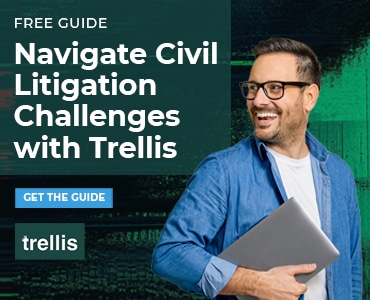Name your clients and other parties in your legal writing with care. The words you use to identify a plaintiff may color the reader’s view.

Table of contents
First impressions matter. The way that we introduce ourselves to others sticks with folks. We also can wear different introductions in different situations to suit our needs. In court, I can be Attorney Taylor or Counsellor. But I don’t introduce myself as such meeting friends of friends out at a wine bar (at least not if I want them to like me). The same is true of introducing parties or any other peripheral character in legal writing. Lawyers should make thoughtful, careful choices about how they refer to main players throughout a brief or motion. A wrong choice (or no choice at all) could result in lost impact, confusion or, at the very least, a missed opportunity.
Name Your Parties to Humanize and Dehumanize
I always enjoy shocking my law students with this concept. But perhaps the more seasoned practitioners among you won’t cringe like some 1Ls when I advocate using naming conventions to humanize or dehumanize depending on your client’s needs. Let me clarify. Using uniform naming conventions for both parties in a case is a lost opportunity to do damage in your reader’s mind to the other side. If you refer to your client as “the Plaintiff” and the opposite side as “the Defendant,” you’ve inadvertently put both parties on equal footing and missed an opportunity to legitimately tip the scales in one direction.
When representing a plaintiff, take advantage of that position. Let’s imagine a simple tort case with the following facts:
Janine Smith was walking into a Walmart when she tripped in a cement pothole outside the front entrance on the sidewalk, fell, and broke her collarbone.
Now let’s consider a few things before we decide what we call our plaintiff. As you’ve probably guessed, simply referring to her as “Plaintiff” is out. That’s too dry, unrelatable and generic to work well for us. At this point, you may think the answer is simple — we want to humanize Janine Smith, and will therefore call her “Ms. Smith.” That’s absolutely the correct answer; but, what if she’s a seven-year-old child? We may get even more out of calling her “Janine.”
Creating a Power Differential
Additionally, we need to create a power differential with our defendant, the big bad multibillion-dollar corporation that has set out to harm regular everyday little girls going to the store with their parents. This is where the fun starts. “Walmart” may actually invoke brand loyalty, while something like “the Corporation” or “the Company” or “the Retail Chain” is a safer bet to invoke images of mechanistic money-hungry corporate America.
But now, what about when we’re representing the big bad corporate defendant? Part of our job as zealous advocates is to subtly dehumanize the plaintiff. Thus, we may have success by referring to Janine Smith as “Plaintiff” throughout our motion. Maybe we introduce the location at which Janine fell at her family’s local Walmart. Perhaps we can play up the community aspect in our naming convention and refer to it as “the Local Store” while also referring to the corporate party by name.
Of course, the facts of your particular case will dictate the naming conventions, but never let it be an afterthought. Make your names elicit thoughtfully considered characterizations.
Abbreviate, But Don’t Confuse Your Reader
Introduce all characters with full names (people and businesses) before you start shortening in any way. When explaining this to students, I use the example of meeting someone new for the first time. Initially, you will likely introduce yourself by your full name. After, as you become acquainted, you may shorten it. We can never assume our reader knows our characters as well as we do. Thus, instead of launching into a brief about Mr. Smith, we meet our character as John Smith. Instead of launching in talking about GNP, Inc., we give a fuller picture by referring to the company as Goliath National Products, Inc.
When you do shorten, try your best not to confuse the reader. Just as meandering sentences and lack of proper grammar trip up readers, so too will ambiguous name abbreviations and acronyms. Bryan Garner and the late Antonin Scalia in their book, “Making Your Case,” advocate avoiding acronyms altogether, saying they can create a “brief of alphabet soup.” After all, they remind us, acronyms “are mainly for the convenience of the writer or speaker,” not the reader.
As all our writing tips go, the point is and should always be the convenience of our readers.
More Legal Writing Tips on Attorney at Work
“Honing Legal Writing Skills: Passive Voice and Parentheticals” by Josh Taylor
“Using Colons and Semicolons When Writing Briefs and Memos” by Josh Taylor
“Commonly Interchanged in Parlance and Commonly Confused in Writing” by Josh Taylor
“Harness the Intuitive, Persuasive Power of Analogy” by Susan Kostal
And be sure to read “Get to the Point!” by Teddy Snyder for quick tips on clear communications.





















